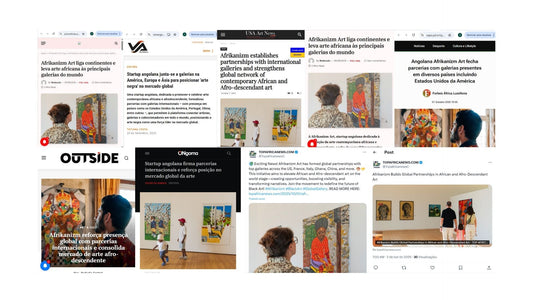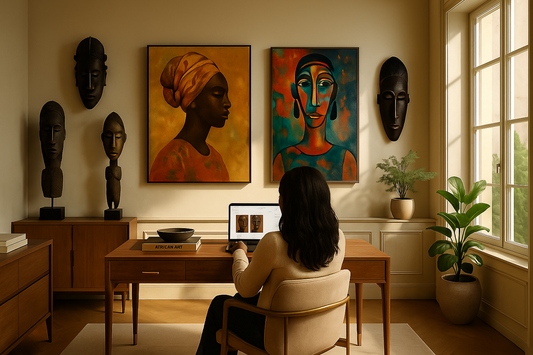AFRIKANIZM ART NEWS

The Global Rise of Contemporary African Art: Growth, Markets, and Cultural Impact
The Global Rise of Contemporary African Art: Growth, Markets, and Cultural Impact
Global Attention, Local Stakes
The trajectory of contemporary African art is undeniably upward. Its presence in global auction houses, biennials, and museum programs reflects a long-overdue recognition of the continent’s visual culture. But this growth prompts critical questions:
Who Owns the Narrative?
While global institutions are increasingly showcasing African artists, there is still a structural imbalance in who controls the platforms and reaps the financial benefits.
Is Local Infrastructure Growing at the Same Pace?
Artists may be gaining visibility abroad, but many still lack access to sustainable studios, funding, and curatorial support at home. The creation of institutions like Zeitz MOCAA, Wakanda Art Society (Lagos), or the Centre for Contemporary Art (Maputo) is vital—but isolated.
What Will Define Long-Term Value?
Beyond trends and sales, the lasting impact of this moment will depend on investment in education, documentation, critical discourse, and fair representation.
As curator Simon Njami once noted, “African art doesn’t need to be validated by the West—it needs to be understood on its own terms.”
In this sense, the current globalisation of African art is not just about market success, but about reshaping the very architecture of the art world—towards a more equitable, polyphonic, and historically conscious ecosystem.
This is not simply Africa’s art moment. It could become Africa’s art century—if the momentum is met with responsibility, collaboration, and a commitment to structural change.
Rapid Market Expansion
- Between 2013 and 2023, sales of contemporary African art grew by 46%, with a record-breaking $101.3 million sold in 2021.
- Industry estimates suggest the market could reach $1.5 billion in 2025, fueled by online buying, art fairs, and a rising class of private collectors.
Resilience Amid Global Slowdown
- In 2023, African art auctions dropped just 8.4%, half the average decline of modern and contemporary art globally.
- Even during the broader market contraction of 2023–2024, the continent’s art market showed impressive resilience.
Catalysts of Growth: Art Fairs & Digital Platforms
- Signature events like 1-54 (London, New York, Marrakech), ART X Lagos, and Dak’Art are pivotal in showcasing African talent.
- Online platforms (Artsy, 1-54 Online) and virtual market tools have expanded collector reach—especially among younger buyers drawn to accessible, narrative-driven artworks.
Women Artists Leading
- In a first for African art, women artists represented 52.8% of auction sales in 2024, netting $22 million—despite market-wide decline.
- This includes record-breaking sales by artists such as Julie Mehretu, Njideka Akunyili Crosby, and Toyin Ojih Odutola.
What Lies Ahead
To sustain this momentum, experts advise:
- Continued investment in provenance research and inclusive collections.
- Expansion of African-based institutions (e.g., Zeitz MOCAA, Dakar Biennale).
- Support for digital platforms and platforms for emerging voices in new markets.
Sources







No comments